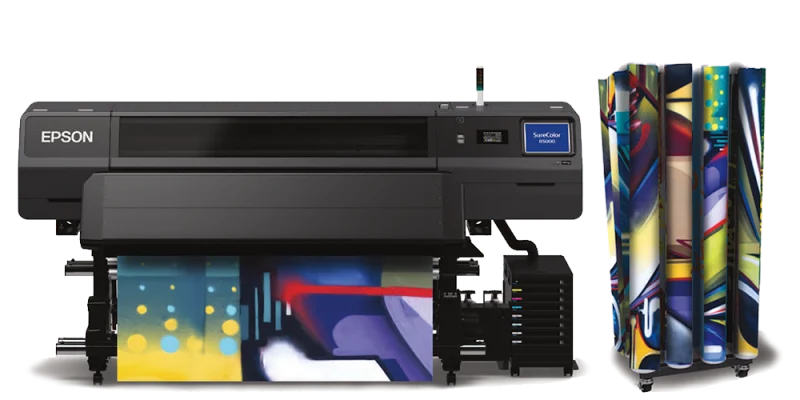Sublimation printing is a popular technique for creating high-quality, long-lasting designs on fabrics, ceramics, metals, and more. However, the success of the printing process largely depends on using the right type of sublimation paper printer. Different types of sublimation paper are designed for different applications, affecting print quality, ink absorption, and transfer efficiency.
In this guide, we’ll break down the various types of sublimation paper, their features, and their best use cases to help you choose the right one for your project.
1. High-Release vs. Low-Release Sublimation Paper
High-Release Sublimation Paper
High-release sublimation paper is best suited for printing on soft substrates, such as polyester fabrics. This type of paper transfers more ink to the fabric, resulting in bright, vivid colors and deep saturation. It is commonly used for T-shirts, sportswear, and other textile applications. The downside of high-release paper is that it takes longer to dry, which may slow down production times.
Low-Release Sublimation Paper
Low-release sublimation paper is ideal for printing on hard surfaces such as ceramics, glass, metal, and wood. This type of paper holds more ink on the surface rather than transferring all of it, which helps create crisp, detailed designs with sharp edges. However, colors may appear slightly duller compared to high-release paper, but this is compensated by its ability to produce sharp, high-contrast prints.
2. Fast-Dry vs. Normal-Dry Sublimation Paper
Fast-Dry Sublimation Paper
Fast-dry sublimation paper is perfect for businesses and print shops that require high-volume printing with quick turnaround times. Since the ink dries almost instantly, there is less risk of smudging, making it an ideal choice for bulk orders, print-on-demand businesses, and industrial-scale sublimation printing. The only drawback is that it may require higher heat settings during the transfer process to ensure a full ink release.
Normal-Dry Sublimation Paper
Normal-dry sublimation paper takes longer to dry but absorbs more ink, resulting in richer and deeper colors. This type of paper is great for detailed prints and artistic designs where color vibrancy is crucial. It is best suited for smaller-scale printing, home businesses, or projects that require extra attention to detail. However, the longer drying time means extra handling care is needed to avoid smudging before transferring the design.
3. Sticky (Tacky) vs. Non-Tacky Sublimation Paper
Sticky (Tacky) Sublimation Paper
Sticky sublimation paper has an adhesive coating that helps it stick to the fabric during heat pressing. This is particularly useful for stretchable materials like sportswear, leggings, and activewear, where fabric movement during the heat press can cause ghosting or misalignment. By keeping the design firmly in place, tacky sublimation paper ensures sharp, clean prints with no blurring. However, it is slightly more expensive than non-tacky options.
Non-Tacky Sublimation Paper
Non-tacky sublimation paper does not stick to the substrate, making it more suitable for hard surfaces like mugs, phone cases, and metal plaques. It is easier to handle and does not require the additional cost of adhesive properties. However, when used on textiles, there is a higher risk of shifting, which can cause blurred or ghosted images if not handled carefully.
4. Lightweight vs. Heavyweight Sublimation Paper
Lightweight Sublimation Paper (100-120 GSM)
Lightweight sublimation paper is typically thinner and absorbs less ink, making it suitable for everyday sublimation printing on fabrics and promotional items. One of the key advantages is that it prevents paper curling in heat presses, which can be a common issue when printing multiple items. However, because it absorbs less ink, it may not be the best option for high-resolution or extremely detailed prints.
Heavyweight Sublimation Paper (120-150 GSM and above)
Heavyweight sublimation paper is thicker and holds more ink, making it perfect for detailed, high-resolution prints on hard substrates like ceramic mugs, aluminum sheets, and wooden plaques. Because it absorbs more ink, it enhances color richness and depth. The downside is that it takes longer to dry and may require higher heat and pressure settings to fully transfer the ink to the substrate.
Choosing the Right Sublimation Paper for Your Project
Selecting the correct sublimation paper depends on the type of material you’re printing on, your production speed requirements, and the level of detail in your designs.
- If you’re printing on polyester fabric, use high-release sublimation paper for the best color vibrancy.
- If you’re printing on hard surfaces like mugs or metal, low-release paper provides sharper details.
- If you need fast production, go for fast-dry sublimation paper to speed up workflow.
- For stretchable fabrics, sticky (tacky) sublimation paper helps prevent shifting and misalignment.
- If you want rich colors and intricate designs, opt for heavyweight sublimation paper to hold more ink.
By understanding these different types of sublimation paper, you can optimize your printing process, ensure higher-quality results, and choose the best paper for your specific needs.

Comments